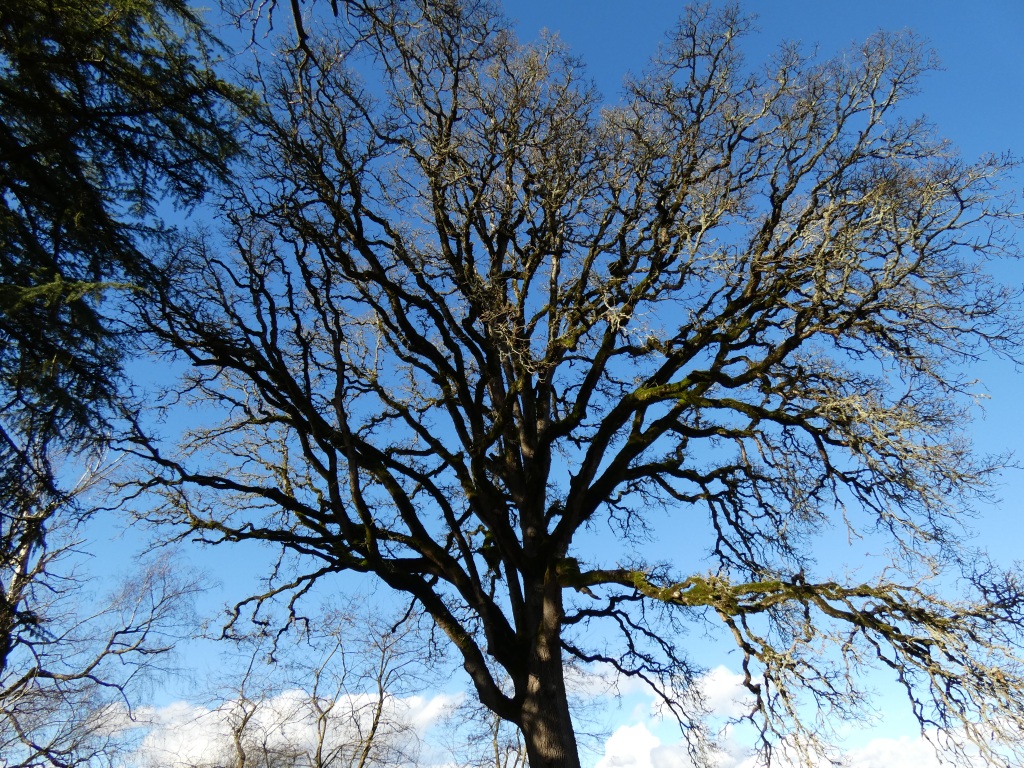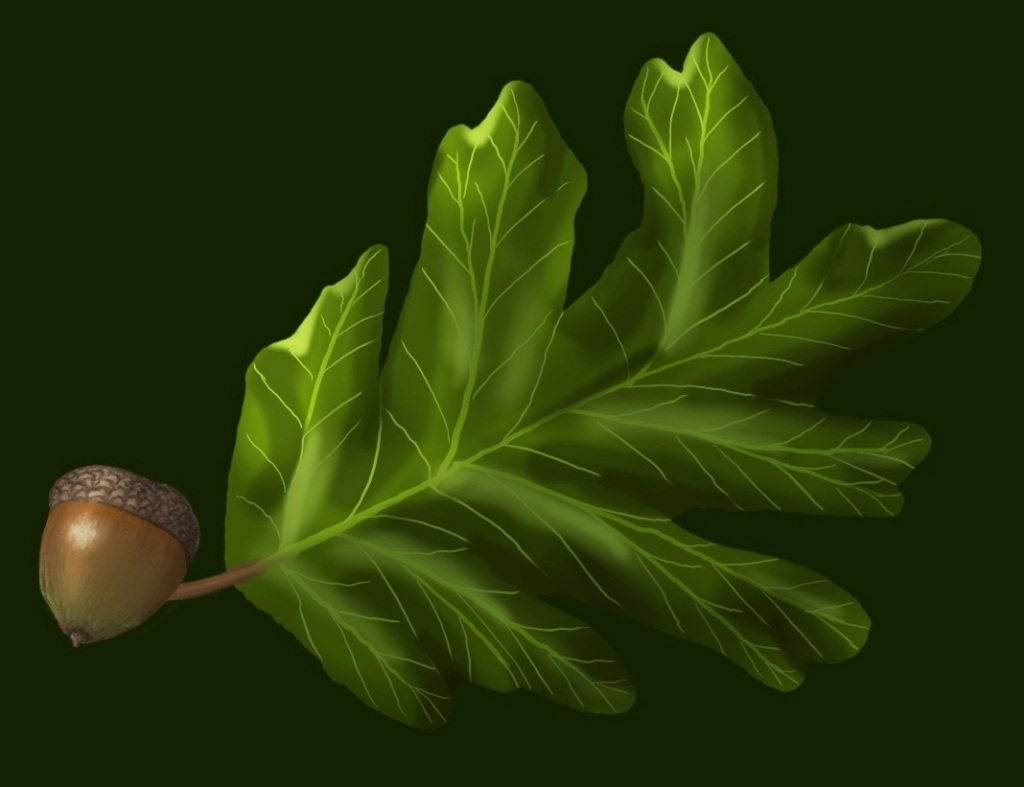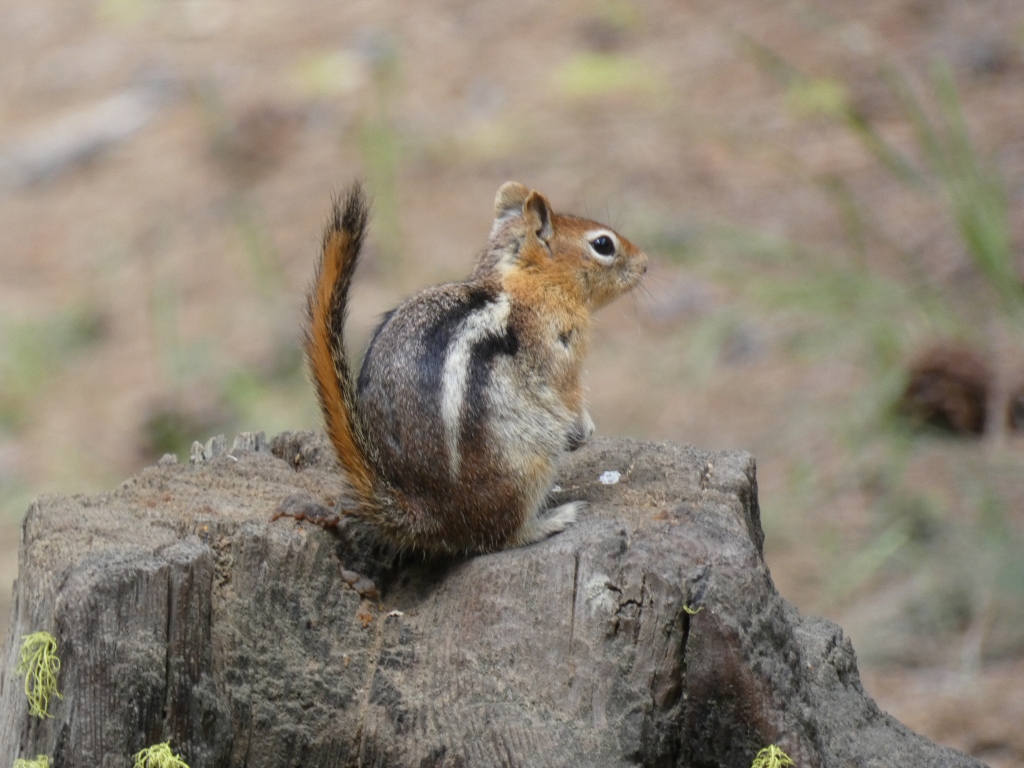For the first entry in the Species Spotlight series, I chose the Oregon White Oak. These trees play an important role in Oregon’s past, present, and future. So let’s dive in to learning more about this incredible species.
Oregon White Oak: Quercus garryana
The Oregon White Oak (or Garry Oak) is one of only four native oak species on the west coast of the United States. It is a hardwood that can survive both drought and limited fire, which play an important role in maintaining their associated ecosystems. They are often easy to spot in open areas, such as oak savannas, due to their widespread crowns (upwards of 50 feet across and 50-90 feet tall) – which always remind me of a brain. In oak woodlands, they will often be taller and narrower as they try to compete for sunlight with neighboring trees and the encroachment of conifers, such as the Douglas Fir. It is a slow growing species, with some trees reaching over 500 years old.
Compared to other oak species that have been planted in the area, the leaves of the Oregon White Oak have 7-9 very rounded lobes, which can be between 3-6 inches in length. In the summer, these leaves are often a deep rich green, fading to golden brown in the autumn. Seeing the autumn sunlight twinkling through the branches of a great Oregon White Oak is truly a sight to behold. Their acorns are typically around an inch long and fairly rounded, changing from green to a rich brown hue. The bark is greyish brown and older trees are often covered in mosses and lichens.
Oregon White Oak: Past
Prior to colonization, the oak savannas and woodlands of the lower elevations of the Willamette Valley were stewarded by indigenous peoples. These ecosystems In the area in and around Portland, the Kalapuya people relied on the oaks and associated species for food. The acorns from the trees could be collected, leached, and ground into flour. Camas plants – whose bright purple flowers light up the oak savannas in spring- also provided food from their bulbs. To help maintain these habitats, native peoples would periodically burn the encroaching underbrush to ensure the oaks, camas, and other plants had enough sun to support their continued survival.
As the region was colonized by settlers, the Oregon White Oaks became valuable in a new way. The hardwood was logged to use in ship building and furniture making, as well as firewood. Given the open areas around the oak savannas, many trees were also removed to make way for farmland. Many of the oaks still standing today are still located on privately held land. As these processes continued, the fire regimes practiced by the Kalapuya and other indigenous peoples were stopped leading to loss of oak woodlands to the mixed forests dominated by the faster growing Douglas Firs.

Oregon White Oak: Present
Today we have a better understanding of the importance of Oregon White Oaks. They help to support over 200 species, including insects, birds, and mammals. One of the most commonly noted is the gall wasp, which creates the notable galls which hang from the branches and fall to the ground. These wasps do not sting, and thus are not harmful to humans. The female wasp lays an egg on the oak tree, which then triggers the formation of the gall around it. The size and shape of the gall is determined by the wasp, not the tree itself. Additionally, once they have fallen, the galls can also be used to make ink for writing.

The Fender’s Blue Butterfly relies indirectly on the Oregon White Oak’s, whose habitat helps support the Kincaid Lupine on which they lay their eggs. These iridescent blue butterflies are only found in the Willamette Valley of Oregon and are now listed as Endangered federally. To help support them, projects at a number of sites have begun to start supporting the restoration of the oak savannas and the planting of Kincaid Lupine.
Oregon White Oak: Future
Currently, the Oregon White Oak can be found from British Columbia to Southern California, but that may not always be the case. While we cannot yet fully understand the possible impacts of a changing climate on the Oregon White Oak, we can foresee that preserving these trees is essential. By learning about and supporting programs that help restore and protect oak savannas and woodlands, we can help these keystone trees and the other species they help support. This includes considering how we might work with local tribes to better steward the land they have tended since time immemorial and being open to the essential role that fire can play in helping to maintain healthy local ecosystems. For better or worse, the future of the Oregon White Oak might be up to us.

For more information, check out:
Tualatin Soil and Water Conservation District
*Note: All photos and illustrations are the work of Kirsten Croswell*


Leave a comment